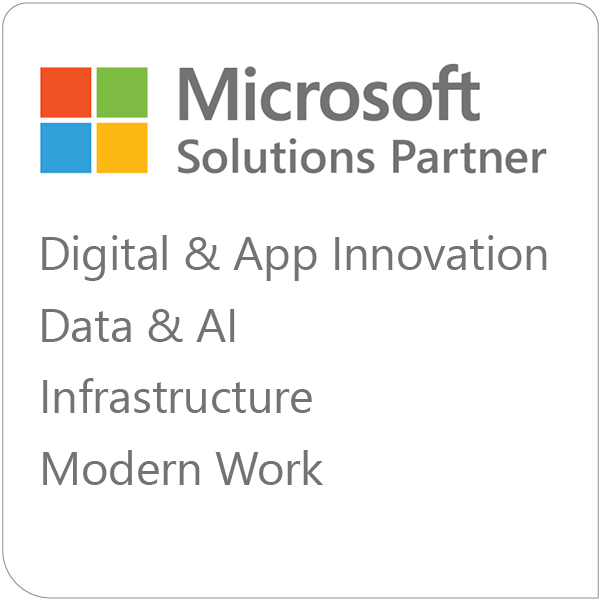Starting your digital transformation journey takes careful thought and planning. In the first of our three-part video series, our Azure Architect Jeremy Brewer will walk you through all the essential pieces of your cloud migration project and get you ready for the steps ahead.
To kick off this series, Jeremy walks you through outlining your cloud migration goals and a few essential steps to help you prepare for your cloud migration journey.
Why are you migrating to the cloud?
What do you think of when you think of a journey? The biggest problem we run into when starting a cloud migration project is taking it from the concept stage to the goal stage. Clients struggle with questions like, How do we get there? What do I need to know? What do we have to plan for? Hopefully, I'm going to be able to answer some of those questions over this series.
An important question to ask and the best place to start is the business justification and triggers. A business justification will become the foundation of the project and help answer questions like, what is the goal, why are we doing this, and what is the priority. Let's review some business triggers that cause a cloud migration to start.
Cloud Migration Triggers
Often, migrating to the cloud is spurred by a few business triggers:
- Save money on hosting costs
- Reduce complexity in the IT department
- The need to take advantage of technical capabilities only available in the cloud
- Scaling your operations to meet the demands of your clients
- Major business events pushing you to look for other options to store your data
Cloud Innovation Triggers
Maybe you're not being forced into the situation - maybe you have innovation triggers like:
- Client-initiated: a client is asking you to do something you're incapable of with your current assets.
- Product-initiated: you're looking to build new capabilities in your current product but can't do that with on-premise infrastructure.
- Geography-initiated: you need to scale to meet a geographical requirement in which a client or customer may be located.
You're probably wondering, "How do I just get started with this?" And the first thing to remember is that this is not a race; it's a marathon.
Here are a few steps to get you started.
Five steps to prepare for your cloud migration
1. Start by cleaning up your digital assets
It's going to take a little bit of time, but this step is critical. Start by cleaning out deprecated digital assets. Clear out old active directory accounts that you don't use anymore, old licensing, files, servers that might not be in use, old software applications, and the list goes on. The goal of this is to reduce the size of your overall digital footprint. Remember, less is more.
2. Gather documentation
Do you have any documentation that was ever provided to you by a partner? This might include information like network topology diagrams, installation notes, passwords, notes on how software was configured, where it was installed, the purpose of each server, and licenses that you use. The documentation will be precious for the partner who's going to be helping you with this cloud migration. Whether you think it might be important or not, anything that you have is probably going to be valuable for your partner to look over.
3. Outline the project
In the project outline, several factors are created and reviewed. A full review of the digital estate is done. Next, a timeline is established for the desired start and completion. The budget is identified and secured. Finally, the technical people from your team are assigned to the project.
4. Create a project roadmap and implementation plan
After the plan is established, we'll take the performance and configuration telemetry of your virtual machines. The information will aid in establishing realistic hosting configurations and costs. A migration strategy is established for each application or set of systems. There are three primary methodologies, and the first is rehosting, where it is determined if your applications are moved by creating new servers. The next is lift and shift, where the servers are cloned to Azure and run without modification. Another possibility is refactoring your applications to be more cloud-native. Maybe we can help reduce your server footprint by going serverless. From there, we'll establish the project and timelines necessary to do this.
5. Understand your regulatory and security requirements
Whether you have regulatory requirements or best-practice security requirements, we're going to look at that drift that occurs during projects and ensure the systems are ready for the long term.
During migration, the teams responsible for all aspects of the project are identified. After the project has been completed, most organizations have teams responsible for maintaining the applications and systems. Items such as patching planned maintenance, incident response are addressed.
A final piece of the solution is disaster recovery and how it integrates into your organization's business continuity plans.
Your Cloud Migration Partner
By outlining your goals and taking a complete inventory of your digital assets, you can confidently embark on your digital transformation journey. Be sure to subscribe to our YouTube channel for more videos in this series. If you're interested in moving your assets to the Azure cloud to power your digital transformation goals, contact our team of experts to set up a free consultation!






